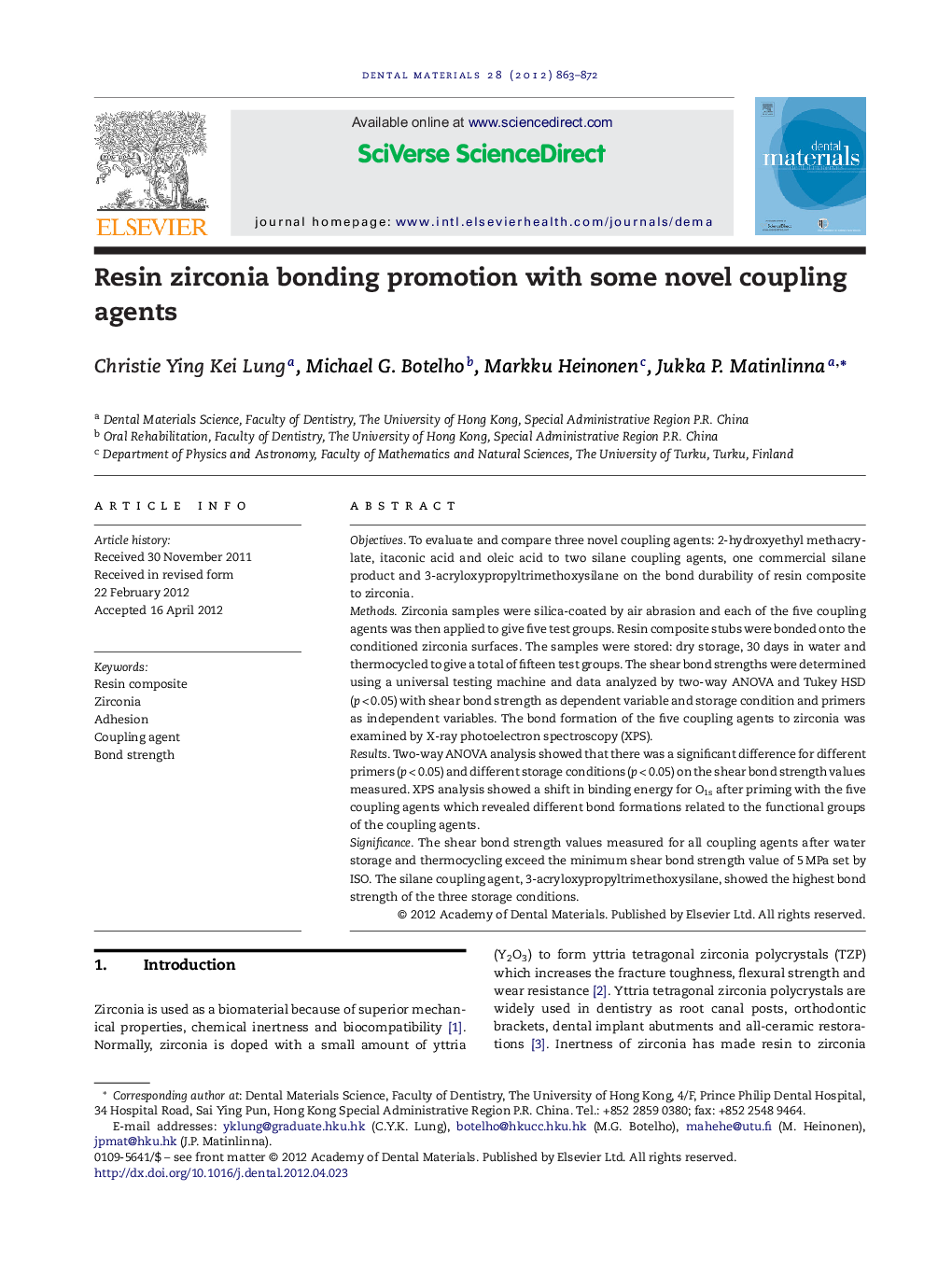| Article ID | Journal | Published Year | Pages | File Type |
|---|---|---|---|---|
| 1421363 | Dental Materials | 2012 | 10 Pages |
ObjectivesTo evaluate and compare three novel coupling agents: 2-hydroxyethyl methacrylate, itaconic acid and oleic acid to two silane coupling agents, one commercial silane product and 3-acryloxypropyltrimethoxysilane on the bond durability of resin composite to zirconia.MethodsZirconia samples were silica-coated by air abrasion and each of the five coupling agents was then applied to give five test groups. Resin composite stubs were bonded onto the conditioned zirconia surfaces. The samples were stored: dry storage, 30 days in water and thermocycled to give a total of fifteen test groups. The shear bond strengths were determined using a universal testing machine and data analyzed by two-way ANOVA and Tukey HSD (p < 0.05) with shear bond strength as dependent variable and storage condition and primers as independent variables. The bond formation of the five coupling agents to zirconia was examined by X-ray photoelectron spectroscopy (XPS).ResultsTwo-way ANOVA analysis showed that there was a significant difference for different primers (p < 0.05) and different storage conditions (p < 0.05) on the shear bond strength values measured. XPS analysis showed a shift in binding energy for O1s after priming with the five coupling agents which revealed different bond formations related to the functional groups of the coupling agents.SignificanceThe shear bond strength values measured for all coupling agents after water storage and thermocycling exceed the minimum shear bond strength value of 5 MPa set by ISO. The silane coupling agent, 3-acryloxypropyltrimethoxysilane, showed the highest bond strength of the three storage conditions.
